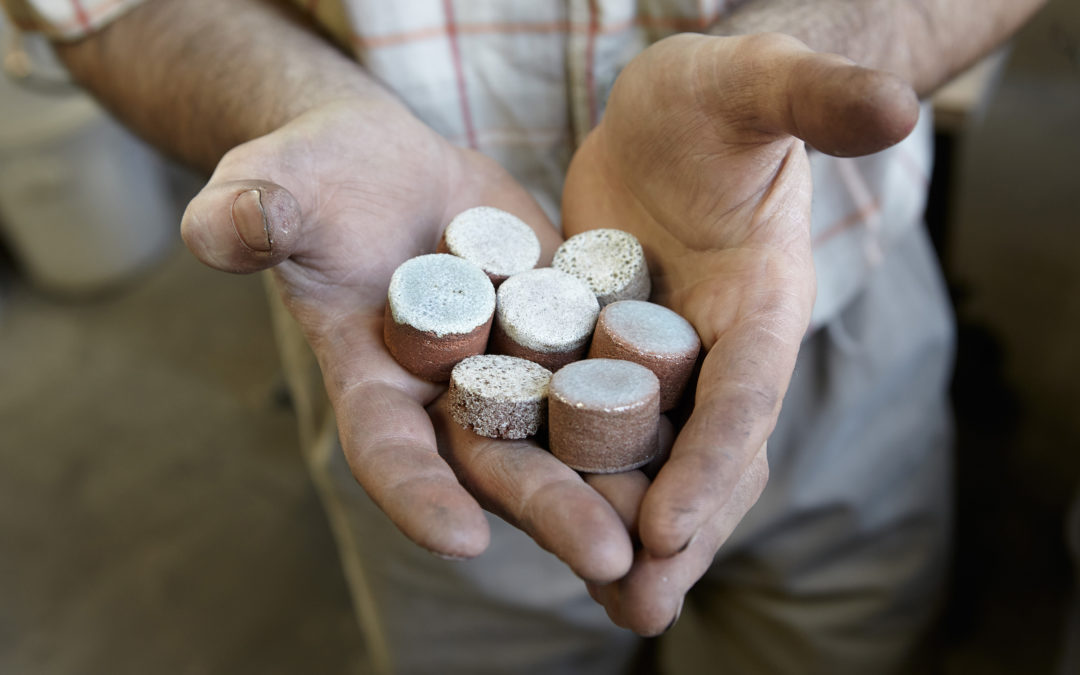By Theresa Millard
Sustainability is a journey and we have to start where we are today. How might we create real change within an industry? Embrace waste and all of its potential. This is an inside look into how our team is working to change industry from within a large manufacturing corporation by turning what we normally think of as waste into something better.
I am a sustainability professional at Kohler Co., working on cultural transformation with a focus on how, as a business, we might leave the world a better place. A key project I’m working on is the Kohler Innovation for Good (IfG) Waste Lab, a circular economy initiative focused on creating high-value products and services out of industrial wastes.
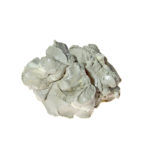

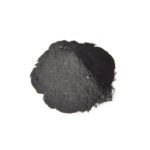
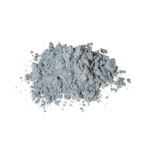
My first passion was as an artist and craftsman and I was always fascinated by industry. I found the perfect professional career in 1988 when I began work at Kohler Co. designing and developing decorative products. However, in 2005, when I had the chance to take a biomimicry immersion class in Costa Rica, I discovered new ways of thinking that shattered my corporate world. With these seeds of learning firmly planted, I realized that the purpose of my job was to design beautiful products that were thrown away when still perfectly useful because the owner wanted something new. The products I worked on could last centuries without needing replacement, and yet I felt personally responsible for breaking that cycle. It was a bitter lesson, and so began my journey at Kohler into the world of environmental sustainability.
How does a longstanding durable goods manufacturer in a resource-intensive consumptive society move from take/make/waste to a sustainability position to a restorative and regenerative position? Not easily. For myself, I knew I needed a second education and a support network of like-minded folks with whom I could challenge my mental models and find new answers. I was lucky to participate in the first cohort of the 2-year Biomimicry Professional Program. This study set me on a course that has been inspiring, informative, and is transforming my understanding of the potential for ourselves as a manufacturing company. Today, due to that education and the global biomimicry networks, I am able to operate inside of a vision that I am hopeful will bring us as an organization to a restorative state, maybe even during my working lifetime at Kohler.
Progressing in how we make things is as important as the things we make.
So why is developing a love for industrial waste important? For me, it is one tangible way in which we can lead a shift to a regenerative state where all resources are valued. At Kohler, I believe that progressing in how we make things is as important as the things we make, and this is an illustrative example of how we might do it.
With the cost of resources so absurdly low, it is often cheapest just to throw them away.
Today, most manufacturers make “industrial waste” as a byproduct of normal factory processes. We work hard to reduce, reuse, recycle, or dispose responsibly, but the fact is, as business grows, so do our piles. With the cost of resources so absurdly low, it is often cheapest just to throw them away.
Upcycling Possibilities – When we stand at a landfill, we see co-mingled dirty waste streams that are impossible to bring back into closed loop processes. Given that our mechanized industrial systems are cleaner than ever before, we have high-quality waste resource flows that, with a craftsman’s eye, can be converted to a great material set. By harvesting wastes at the point of generation, we make sure they are as pure as possible, giving us the best input materials.
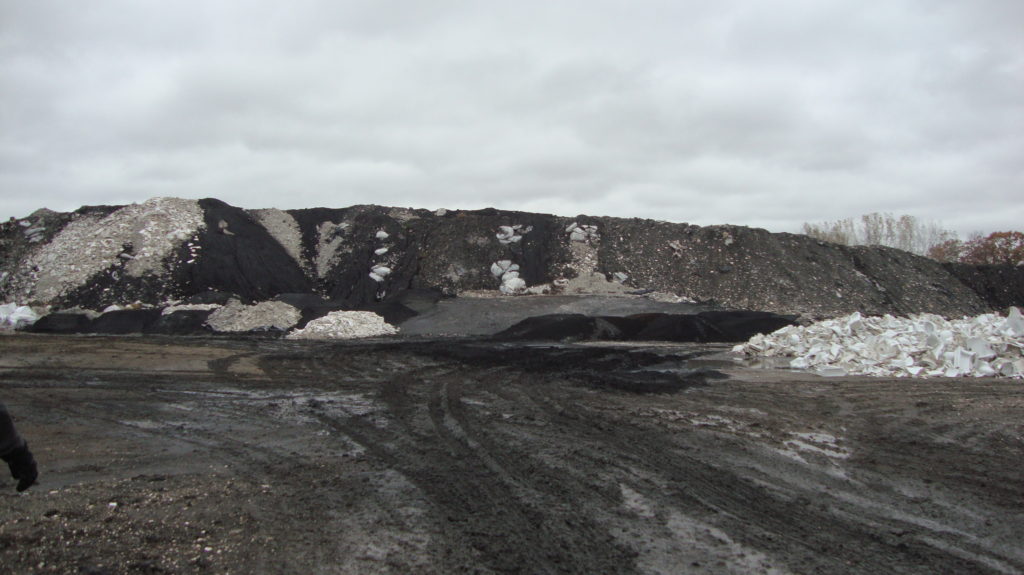
Locally Available Abundance – We are investigating what wastes we have in abundance, locally available at the Kohler, Wisconsin site. Where do they come from, what are they exactly, and where do they go? Understanding the composition and characteristics is a critical step in being able to use the wastes as a raw material input. We are looking at wastes from enameled cast iron and vitreous china manufacturing – the materials used to make tubs, sinks and toilets. We are targeting materials such as foundry dust, spent sand, clay floor scraps, and glaze overspray. Today these all go to landfill.
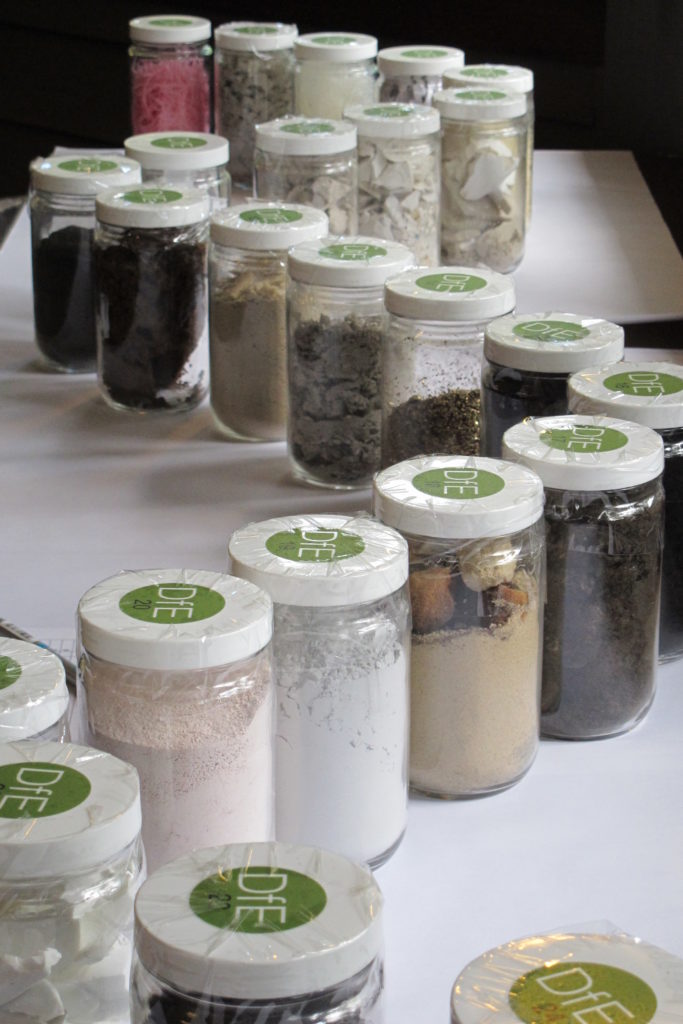
In our vision of the new factory ecosystem, each material has a next use.
Systems View – We are mapping all of our wastes – of which there are dozens on our factory campus – and creating a systems view of them. In our vision of the new factory ecosystem, there is always a next use for each material. Today we are investigating the manufacture of decorative tiles, furniture, soil enhancements, aggregates, and farm run-off abatement products.

Image: Lanius Design
Integrating Development with Growth – We are at the front-end investigation of our processes, starting small and thinking big. We have not brought a product to market, but are committed to the end goal of finding a productive use for all waste on the Wisconsin campus, and to bring those learnings to other factories around the world. This work is a bridge. It is not the final solution in of itself but part of our necessary journey in our business evolution. By bringing an arts and crafts approach to these materials, we make inspired uses for them. By bringing a biomimicry approach, we create an optimized system with the vision of regeneration at the center. Putting this inside of a business, we have the chance to make real change for industry.
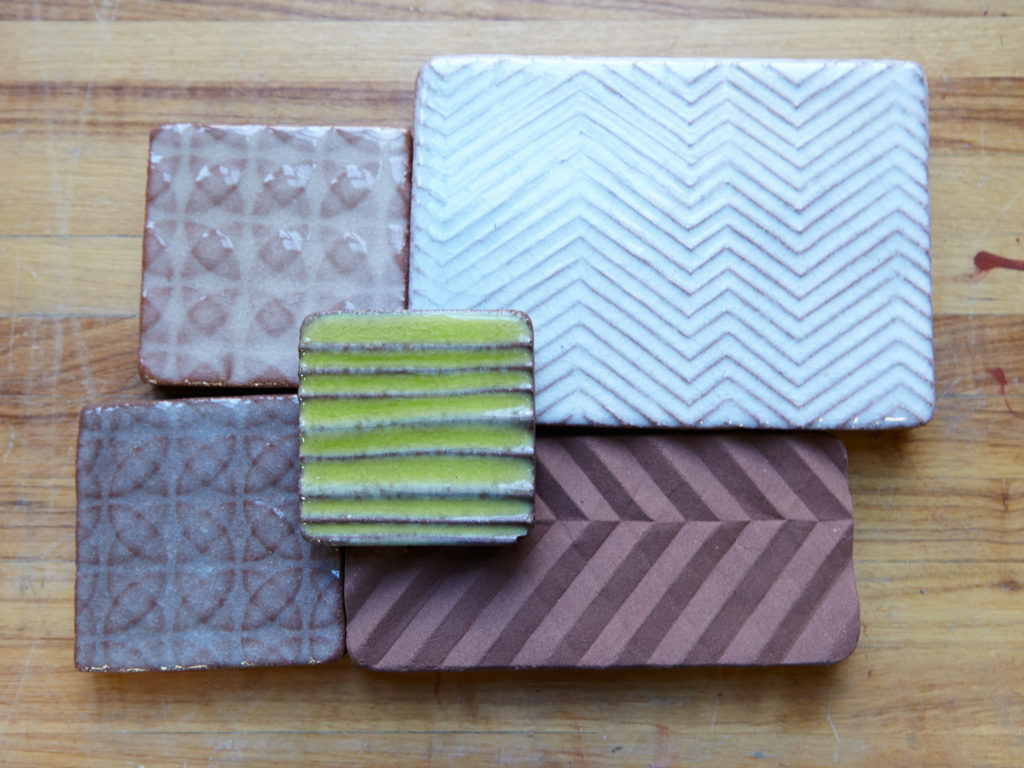
This is hard work. Commodity costs are low, people are busy and the idea of using wastes as a feedstock is a difficult concept. We are proposing new kinds of products that don’t fit our portfolios. Our equipment is not set up to collect clean waste streams and we know we will need to make products in new ways. There are risks and likely failures, and we are still trying to figure out the business case in many instances. The work can be lonely and takes a special kind of person to commit to this ambiguous territory. In the IfG Waste Lab, we have a diverse, optimistic team who have given of their skills, time, experience, and passion. Because we operate under a vision of a regenerative future, we are able to tap an energy that is very powerful and full of hope. Together we are falling in love with industrial wastes and it is so much fun.
About the author:
Born in the U.K., Theresa Millard is a Certified Biomimicry Professional, holds a Bachelor of Fine Arts degree in ceramics from Wolverhampton Polytechnic, U.K., and a Master of Fine Arts in ceramics from the University of Washington in Seattle. She joined Kohler Co. in 1988, working in the Wisconsin Pottery in technical development. Millard moved to new product development in 1995 and moved up through various design roles before studying biomimicry in 2005 and moving to her current philosophical approach to industry. Today she lives between Spain and the U.S. Millard’s ultimate goal is to contribute to the evolution of business through practical work that utilizes her passion for the triple bottom line: People, Planet and Prosperity. She sees great opportunities for us working together and encourages participation in biomimicry education and in joining your local biomimicry networks. Hers are:
http://biomimicryiberia.com
http://www.biomimicryalliance.eu
Come find us!
Photo credits: All images courtesy of Kohler Company, with the exception of the “Innovation for Good Waste Lab” infographic, which was created by Lanius Design.

